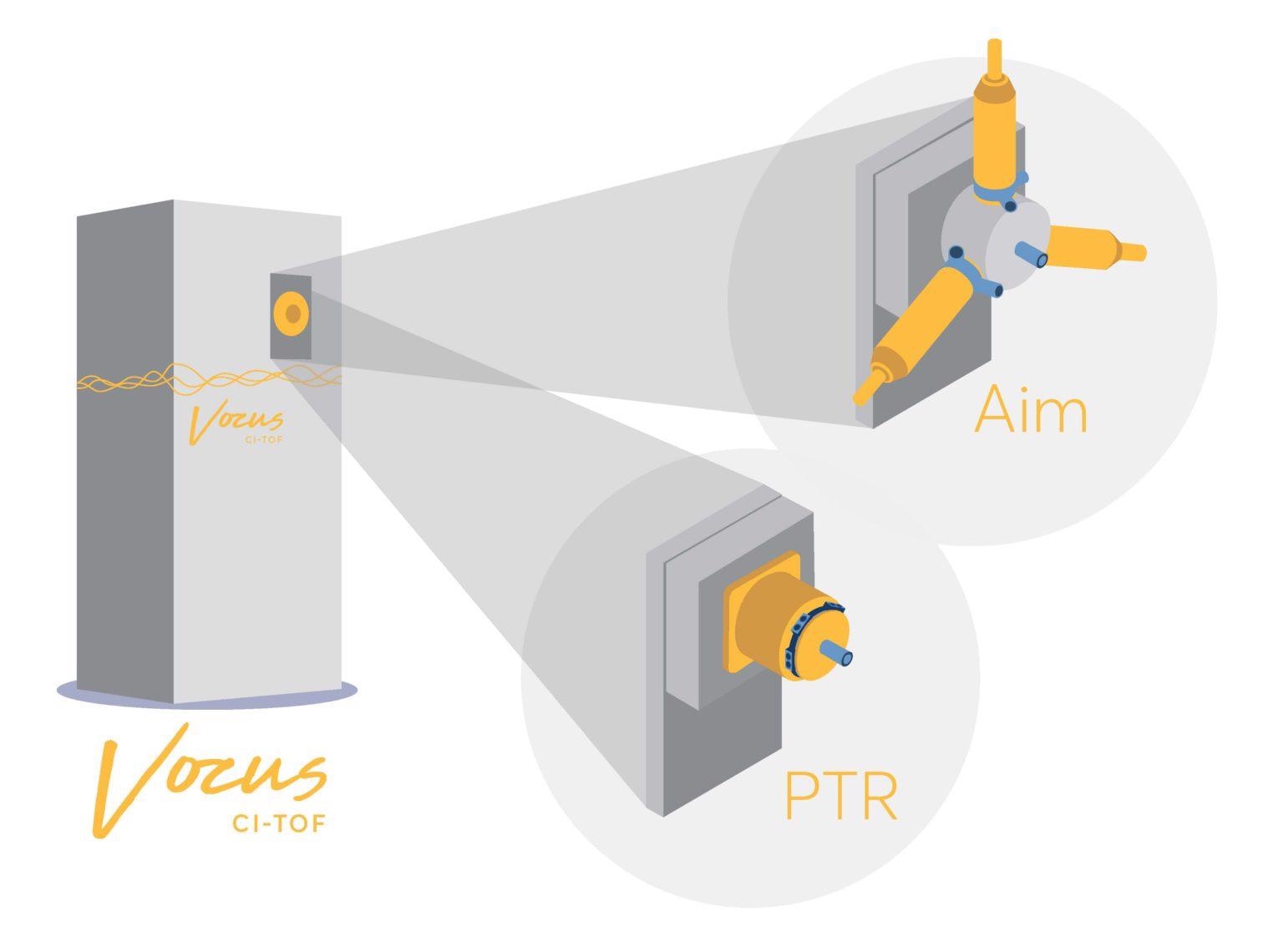TOFWERK’s newly released Vocus Aim Reactor expands the detection capabilities of the Vocus CI-TOF to include new classes of organic and inorganic compounds – making it the world’s most powerful and versatile real-time chemical ionization mass spectrometer.

Flexible Ionization to Target Your Compounds of Interest
Image Credit: TOFWERK
The Vocus CI-TOF allows fast, simple interchange between our high-performance PTR Reactor and the new Aim Reactor. The complementary strengths of these two chemical ionization reactors allow you to select the ideal chemical ionization method to target your compounds of interest and give you the flexibility to address diverse and evolving needs.
Continuous Innovation to Expand Vocus Capabilities
Real-time Chemical Ionization Mass Spectrometry
Real-time chemical ionization mass spectrometry (CI-MS) has revolutionized the detection of trace volatile organic compounds (VOCs) in air. Diverse compounds are instantaneously reported with low limits of detection in the lab or the field. Soft ionization combined with high mass resolving power enables analysis of complex mixtures without chromatography.
Vocus PTR Precisely Identifies Trace VOCs
Proton transfer reaction (PTR) ionization – with H3O+ reagent ions – is the most widely used real-time chemical ionization technique in research and industry. The advanced design and high performance of the Vocus PTR Reactor allows precise identification and quantification of diverse VOCs, as demonstrated in many recent publications and application notes.
Alternate Reagent Ions Expand Vocus PTR Detection Capabilities
PTR ionization greatly reduces the fragmentation of VOCs compared to electron ionization (EI). But, PTR ionization of certain compound classes – especially oxidized molecules – yields sufficient fragmentation to complicate interpretation of mass spectra. The Vocus CI-TOF overcomes this by using ammonium adduct ionization in the PTR Reactor, instead of or in alternation with PTR ionization. In this ionization scheme, ion-molecule adducts are formed with ammonium ions, limiting fragmentation of compound classes that are classically difficult to analyze with PTR ionization. It is similarly possible to use NO+ and O2+ ionization in the PTR Reactor to target other compound classes.
Going Farther with the New Vocus Aim Reactor
The new Vocus Aim Reactor further expands the detection capabilities of the Vocus CI-TOF product line, offering fast, sensitive detection of trace inorganic and organic compounds over a broader volatility range than PTR. For instance, the Aim Reactor has been used to monitor inorganic acids in semiconductor manufacturing and diverse classes of compounds in ambient air. The reactor hardware operates at an increased pressure to suppress fragmentation of analyte ions and uses compact VUV sources to generate both positive and negative reagent ions. Additionally, the ionization schemes available with the Vocus Aim are generally much more selective – overcoming certain problems encountered with the broad ionization capabilities of PTR, including generally high backgrounds or interfering isobars precluding the detection of trace compounds of interest.
Flexible Ionization to Target Your Compounds of Interest
The Vocus CI-TOF allows fast, simple interchange between our high-performance PTR Reactor and the new Aim Reactor. Each reactor can be operated with a unique set of reagent ions. Users may configure their Vocus CI-TOF to target needs, with options including:
- One reactor with a single reagent ion
- One reactor that can switch between multiple reagent ions in a single experiment
- Two reactors that can be interchanged between experiments, each with different reagent ions
Learn more about the Vocus CI-TOF on our product page and use our resources to determine what configuration is right for your target compounds.